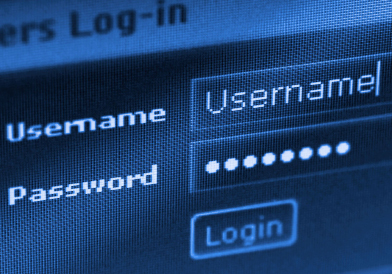Module 2 Introduction
Module 2: Roots and Powers
Module 2 Introduction

© Valery Potapova/shutterstock
Computers and the Internet have been changing the way people perform their daily tasks. Sending letters has been replaced by e-mailing. Catching up with friends has been replaced by social networking interactions. Shopping and banking can be done from the comfort of your own home with the click of a mouse. The convenience of all these tasks means that security measures have to be in place to protect personal and confidential information. One security measure is the use of a password to permit individuals to access information and services.
Another security measure is the use of encryption to hide sensitive information such as your banking and credit card information. Encryption allows for the encoding of messages so they cannot be read unless they are decrypted.
Computers encode messages into a language known as the binary number system. All information in the binary system can be transmitted as sequences of the digits 1 and 0. This is the way computers run programs and store data.
In this module you will examine the math concepts underlying basic encryption techniques. You will begin by learning how to express a number in terms of its prime factors. This technique, known as prime factorization, is used to crack codes involving very large prime numbers. You will learn how to apply prime factorization using a variety of strategies.
In Module 1 you used square roots and cube roots to solve problems involving area and volume. In this module you will examine square roots and cube roots from a different perspective. Just as encryption and decryption are inverse mathematical processes, so are the processes of squaring and square rooting and cubing and cube rooting. You will learn how to use prime factorization to obtain the roots of perfect squares and perfect cubes. You will then have the opportunity to apply these processes to the development of your own coding system.
In this module you will learn about irrational numbers such as ![]() and
and ![]() . The properties of these numbers make them ideally suited for testing a computer’s computing power. Irrational numbers are also suited for secret codes since their decimal forms provide an unending source of digits without periodic pattern.
. The properties of these numbers make them ideally suited for testing a computer’s computing power. Irrational numbers are also suited for secret codes since their decimal forms provide an unending source of digits without periodic pattern.
In the last half of the module you will investigate radicals and exponents. You will learn that radicals can be expressed in two forms and can also be written as a power. You will review the exponent laws you learned in your previous math studies. You will also be introduced to two other exponent laws—the zero exponent law and the integral exponent law.
The lesson questions you will investigate in this module are as follows:
|
Lesson |
Title |
Lesson Questions |
|
1 |
Factors and Multiples |
|
|
2 |
Square Roots and Cube Roots |
|
|
3 |
Irrational Numbers |
|
|
4 |
Mixed and Entire Radicals |
|
|
5 |
Integral Exponents |
|
|
6 |
Rational Exponents |
|
You will cover the outcomes in a variety of ways. You will have the opportunity to perform Math Labs, experiment with interactive applets, and watch videos that demonstrate how to solve problems. You will also have the opportunity to use the Internet to extend your learning about the history of cryptography. In this module as well as in the next, you will have multiple opportunities to see how the math concepts you learn can be applied to secret code construction. You can then put your creativity to the test by developing a secret code yourself!